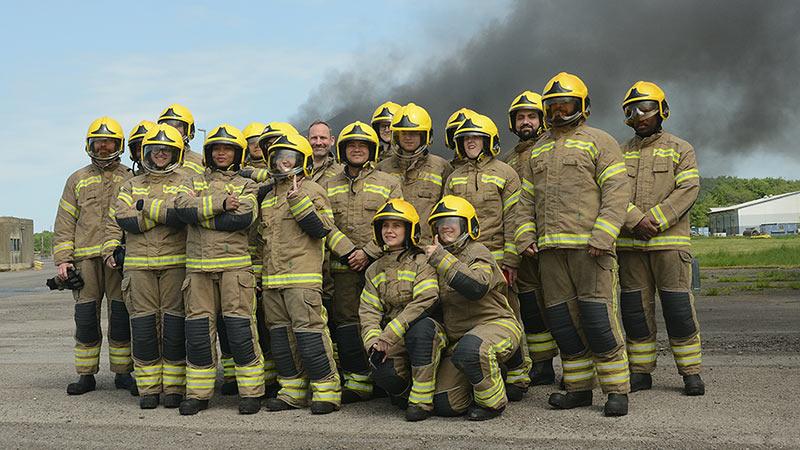Last semester 15 undergraduate and postgraduate students and five academic colleagues from four Westminster Architecture courses took part in a fire experience day at the Fire Service College, Gloucestershire. This event had a deep impact on how these students assess their architectural practice today.

The event was designed to introduce the Architecture academics and students from Architecture BA Honours, Architecture MA, Architecture and Environmental Design BSc Honours and Architectural Technology BSc Honours courses to the ways in which flame, heat and smoke affect buildings and how fires can be prevented, escaped from, and extinguished from an architect’s point of view. For many students, this was their first exposure to the technical considerations, and roles and responsibilities of an architect as they relate to fire behaviour and prevention in buildings.
The day was sponsored by the AXA Commercial Business Resilience Management Team with Nick Tilley and organised by Gary Marsden, Rachel Jones and Andrew Taylor of the Fire Service College, Steve Skarratt of FireQual, and Ian Abley of RISCAuthority, the insurer led department of the Fire Protection Association.
The fire experience day was made up of theoretical discussions, laboratory demonstrations, an introduction to historical precedent in fire safety, and physical tests and exercises for students. These included a blindfolded escape exercise from a multi-storey building and a firebox demonstration to aid understanding of fire behaviour, ventilation, and flashover. Students and academics, fully kitted out in protective gear, literally felt the heat.
In a follow-up survey, students reflected on their experience and how it would impact their architecture practices going forward.
BSc Architecture and Environmental Design student Anastasia Suzdaltseva Kazakova said: “Sometimes we focus so much on a design’s creative aspect that we forget the user. Architecture is for humans, and we somehow forget how to design for the human. I believe it is essential for us as students and tutors to push elements of fire security during our studios…the sooner we start to implement [fire safety] aspects to our designs, the easier and more naturally it will come to as future architects.”
MA Architecture student Simon McLanaghan said: “As I am about to graduate, the main advantages I can see are considerations to take into professional practice. I have five years’ experience of designing for fire safety in practice, and still found the course very eye opening, particularly when considering user experiences of fire. In regard to university education, the topic of fire is scarcely addressed through design studios, often dismissed for the wider trope of sustainability. Unless material is a key part of the design project, it is often considered towards the end of the year. We need to further our understanding of material relationships and be far more critical about design choices.”
Senior Lecturer Scott Batty said: “There has been a lot of design first, technical issues second [in architectural programmes] and that is not right. Fire safety is not just about escape; it’s about how the building can be safely assembled, and how it can be safely maintained. These are massive issues that should not be a technical checklist, but design drivers. The big challenge is to make safety integral to design thinking so that students are thinking about it from day one.”
At the University of Westminster, fire experience days have become part of a thread of learning throughout the undergraduate course. Lectures in Year 1 introduce fire safety principles, whilst Year 2 includes the appraisal of a live building. In Year 3, students demonstrate application of fire safety principles in their final building design.
Learn more about Architecture, Interiors and Urban Design courses at the University of Westminster.







